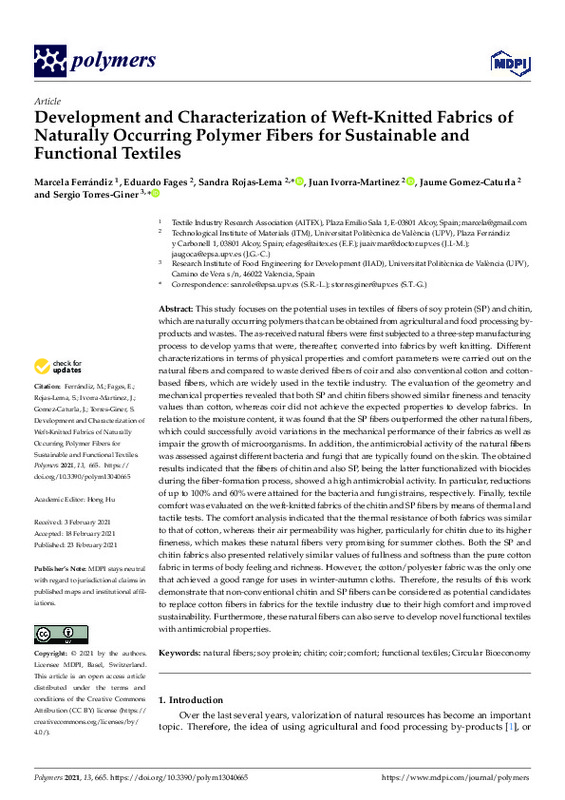JavaScript is disabled for your browser. Some features of this site may not work without it.
Buscar en RiuNet
Listar
Mi cuenta
Estadísticas
Ayuda RiuNet
Admin. UPV
Development and Characterization of Weft-Knitted Fabrics of Naturally Occurring Polymer Fibers for Sustainable and Functional Textiles
Mostrar el registro completo del ítem
Ferrándiz, M.; Fages, E.; Rojas-Lema, SP.; Ivorra-Martinez, J.; Gomez-Caturla, J.; Torres-Giner, S. (2021). Development and Characterization of Weft-Knitted Fabrics of Naturally Occurring Polymer Fibers for Sustainable and Functional Textiles. Polymers. 13(4):1-17. https://doi.org/10.3390/polym13040665
Por favor, use este identificador para citar o enlazar este ítem: http://hdl.handle.net/10251/181730
Ficheros en el ítem
Metadatos del ítem
| Título: | Development and Characterization of Weft-Knitted Fabrics of Naturally Occurring Polymer Fibers for Sustainable and Functional Textiles | |
| Autor: | Ferrándiz, Marcela Fages, Eduardo | |
| Entidad UPV: |
|
|
| Fecha difusión: |
|
|
| Resumen: |
[EN] This study focuses on the potential uses in textiles of fibers of soy protein (SP) and chitin, which are naturally occurring polymers that can be obtained from agricultural and food processing by-products and wastes. ...[+]
|
|
| Palabras clave: |
|
|
| Derechos de uso: | Reconocimiento (by) | |
| Fuente: |
|
|
| DOI: |
|
|
| Editorial: |
|
|
| Versión del editor: | https://doi.org/10.3390/polym13040665 | |
| Código del Proyecto: |
|
|
| Agradecimientos: |
|
|
| Tipo: |
|









